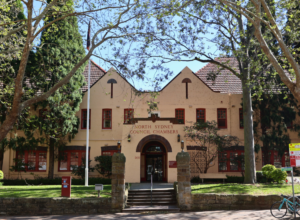17 October 2025
North Sydney Council will again seek public support for a substantial rate hike of between 40% and 54% over three years, unveiling a new 2026–2036 Long-Term Financial Plan that it says is vital to restoring financial sustainability—but which largely mirrors the scale of last year’s failed proposal.
The 40% proposal is described, in a bemusing fashion, as the “treading water” option and the 54% option as having an “eye to the future.”
The draft plan, due before councillors on 27 October, presents three funding paths ranging from a rate-pegged status quo to cumulative increases of 39.9% or 54.2%. These would raise between $190 million and $278 million in additional revenue over the decade to tackle what the council describes as a $157 million infrastructure backlog and to modernise corporate systems.
Chief executive Therese Cole has described the council’s financial position as “unsustainable”, with renewal funding meeting just 69% of required investment and continuing operating deficits eroding reserves.
Both the “treading water” and “eye to the future” options would require special rate variation approval from the Independent Pricing and Regulatory Tribunal and include increases to the minimum rate to improve “equity” between detached homes and apartments.

The renewed proposal follows IPART’s rejection of the council’s 2025 attempt at a two-year variation, which the tribunal found lacked sufficient community understanding and placed too much burden on apartment owners. IPART also noted that many objections linked the rate rise to the costly North Sydney Olympic Pool redevelopment—a project that materially weakened the council’s balance sheet.
In its latest submission, council insists “all costs associated with the North Sydney Olympic Pool will be funded through existing revenue in all options,” stressing that the proposed increase is for asset renewal and service resilience. Yet the scale of the proposed rate rise remains broadly similar to last year’s, raising questions about how much has changed beyond presentation and timing.
The plan acknowledges that debt levels and liquidity pressures worsened after the pool project, while asset renewal budgets were repeatedly cut to fund other obligations. Even so, the document concedes that the new rate paths would still not provide for growth infrastructure such as libraries, sporting facilities or new open space.
Council has since developed a performance and improvement plan, completed a Micromex survey showing little appetite for service cuts, and introduced a hardship policy. But given IPART’s earlier concerns about transparency and justification, it remains to be seen whether ratepayers—and ultimately the tribunal—will view the revamped plan as a genuine reset rather than a re-run of last year’s rejected case.
Public consultation on the plan and rate options is scheduled from 29 October to 3 December.
 0°C | Tuesday October 21, 2025
0°C | Tuesday October 21, 2025 